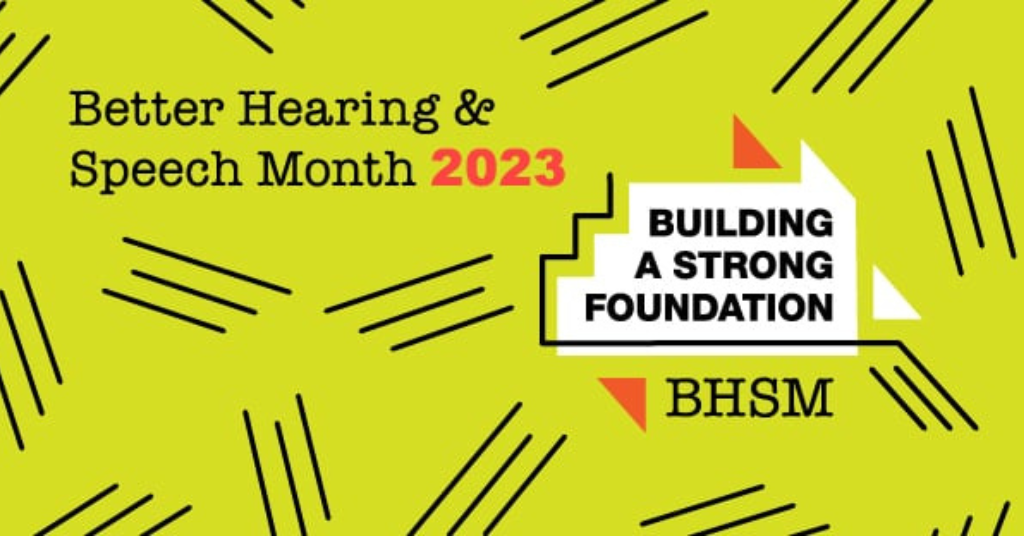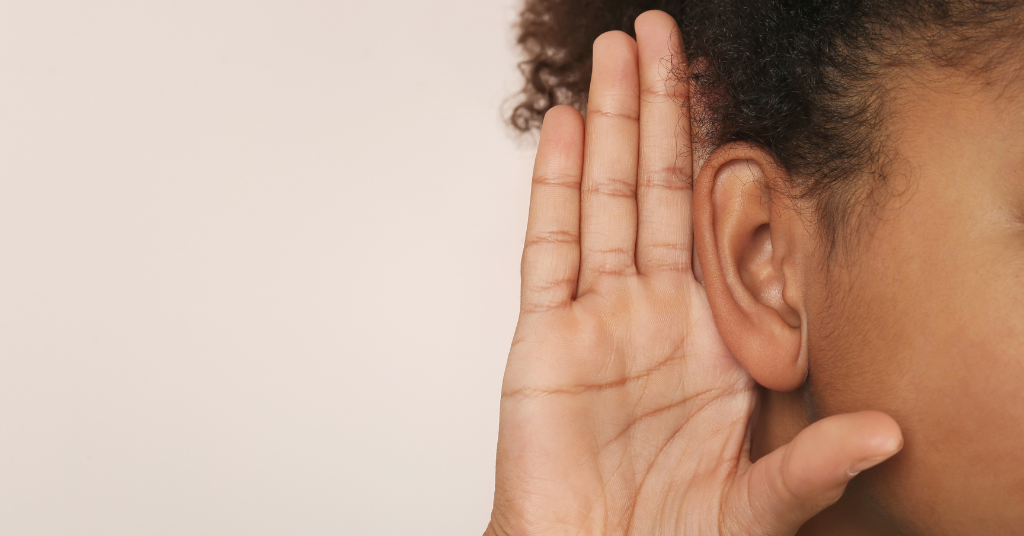
This airplane game makes speech learning fun
July 16, 2019
How to hear better in virtual meetings
July 18, 2019Hearing loss terms you need to know

If you’re not familiar with the d/Deaf community, some hearing loss terms might cause you some confusion.
What’s the difference between “deaf,” “Deaf” and “hard of hearing” What’s an “BTE” hearing aid? What is “deaf-gain?” If you’re new to hearing loss – and even if you’re not – this little guide help you understand the diversity of the culture through the common terminology.
As an older adult who developed hearing loss later in life, I was surprised to learn all the terms and words used for identity and technology across the d/Deaf culture.
Trust me, you need only go online and take a look at the many forums and groups out there dedicated to the hearing loss community to understand. You won’t need to read much before you might stumble on some strange term that you’ve never come across before.
Here are some important hearing loss terms you need to know:
Identity terms for people with hearing loss
Deaf or deaf?
Now, this one can be very confusing, isn’t it the same word? Yes, it is, but, you’ll notice that the first version is with a capital ‘D’ and it always appears this way, regardless of grammar usage, because it means and refers to those people who are a part of Deaf culture and use sign language to communicate.
The second spelling of the word ‘deaf’ means a person with hearing loss, specifically severe or profound hearing loss.
Read more: Celebrating the diversity of deafness
Hard of hearing
Those who identify as hard of hearing often have mild or moderate hearing loss and may either identify with Deaf culture or not.
Other terms to be aware of
Deaf-Gain
This term is used by people who prefer it to using “hearing loss.” The term recognizes what people “gain” from their deafness, rather than what they “lose.” This can be such things as being a member of a thriving community or being able to fully appreciate Deaf culture and language.
Children of Deaf Adults (CODA)
This term refers to hearing children of any age who have been raised by one or more Deaf adult. These people are often born into Deaf society and learn Deaf culture, including Sign Language as a second language.
Kids of Deaf Adults (KODA)
This refers to both Deaf and hearing kids who live with one or more Deaf parent or guardian.
Grandchildren of Deaf Adults (GODA)
This refers to both Deaf and hearing grandchildren who have one or more Deaf grandparent.
Siblings/Spouse of Deaf Adult (SODA)
When this term refers to a sibling, these people often have grown up with someone who is Deaf. Growing up with a Deaf sibling or close friend allows them to have knowledge and understanding of Deaf culture. These people may also use sign language.
For a spouse, when they marry or commit to someone who is Deaf, they too will gain important understanding about Deafness and the community – at least as far as it affects their partner.
DEAF of DEAF (DOD)
This term refers to Deaf or hard-of-hearing children who are born and raised by one or two Deaf adults. These people are often part of the Deaf community and will learn sign language as a second language.
Hearing
Basically, someone who is “hearing” is a person, considered by mainstream society, with “normal” or “standard hearing.” This individual may be able to use sign language or lip reading, and they may also have an understanding of Deafness, but they can hear without the assistance of hearing aids.
A hearing aid is an “aid,” right?
Hearing aids come in a variety of form factors and technological benefits. There isn’t just one type of hearing aid, but, in fact a number of different ones.
Let’s take a look:
Behind the Ear (BTE)
This type of hearing aid is one of the most common ones. You’ll see these most often as you pass men, or when standing behind them.
No, I’m not being sexist, it is just that with the majority of men having short hair (or in my case very little) the device, small as it is, can be seen just resting on top of ear.
This type of hearing aid sends sound into the ear in three different ways, depending on the individual’s needs.
In the Ear (ITE)
These hearing aids have everything made inside the ear mould and fit in the ear. ITC aids fit in the ear canal itself and are harder to see.
Completely in the canal (CIC) aids are much smaller and difficult to see, unless someone is looking at the ear.
Invisible in the canal aids (IIC), such as the Phonak Lyric, cannot be seen by looking at the ear. This kind of aid is still very new and is not available across the board just yet. Some of these are removable, while others are placed in position deep in the canal and left in-place for months at a time – like the Lyric device, which is removed and cleaned by a professional before being replaced.
Other types of hearing aids
There are many other types of hearing technology. For example, body worn aids, for people with difficulty using small buttons, these are worn and an earpiece attached to a wire is inserted into the ear. There are also wireless versions.
There are hearing aids for those with hearing in one ear, surgical options to have a device implanted or bone-conductive solutions.
Read more: Hearing Aids
As you can see, with hearing loss comes a whole wealth of rich new terms to digest and understand.
Whatever you do, don’t be put off. Just like anything else worthwhile, if you take your time with this, you’ll be better able to understand the d/Deaf community and culture. You’ll be able to learn and connect with others, making this definitely a “deaf-gain.”



